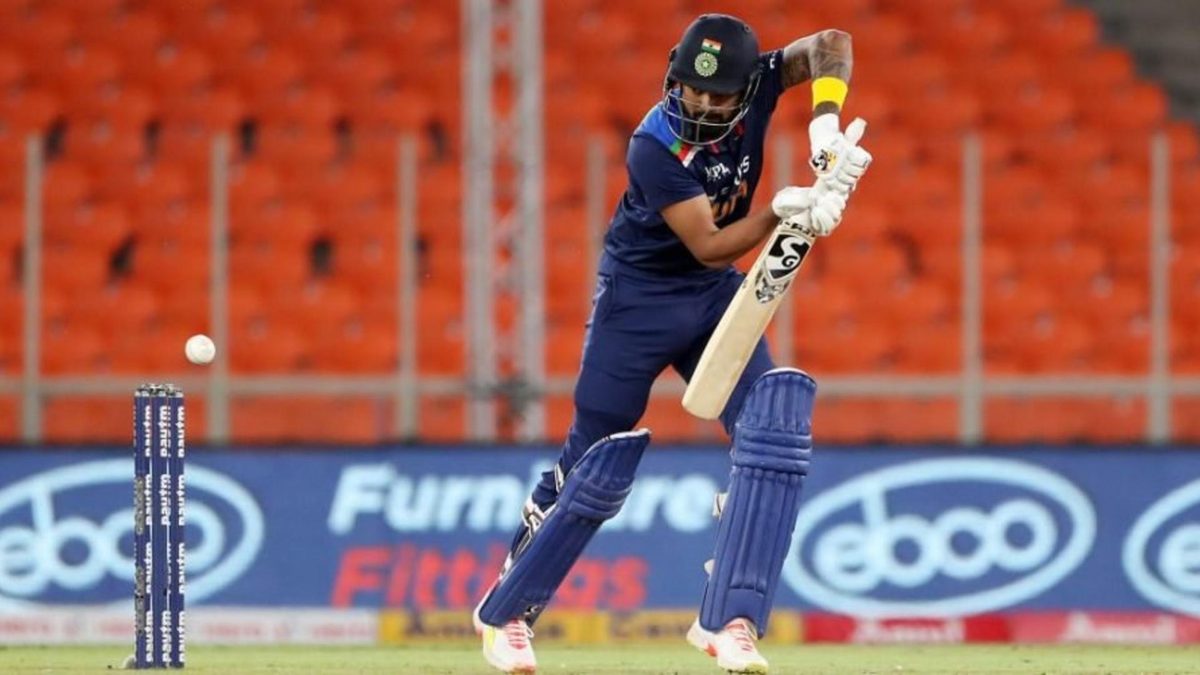
With one run in three matches this series, KL Rahul’s lack of form is rightfully being scrutinised, but there are still enough reasons to back India’s incumbent opener.
Subscribe to the Wisden Cricket YouTube channel for post-match awards, player interviews, analysis and much more.
When Mark Wood castled KL Rahul with an in-ducker in the third T20I, the sound of timber would have painfully reverberated inside the batsman’s helmet. He shook his head as he walked off, thrice having posted a nought in his last four T20I innings.
The strangely quiet run, just months after a familiarly fruitful IPL season, once again puts the world’s No.4-ranked T20I batsman between the crosshairs. In the lead up to the T20 World Cup, one-half of India’s first-choice opener is having difficulties getting off the mark.
Is it time to give KL Rahul a break from opening responsibilities? There’s Ishan Kishan, bubbling with talent, energy, and runs are moving out of position to keep Rahul and Rohit Sharma at the top. There’s Shikhar Dhawan as the dependable back-up option, and there’s also the enticing prospect of having Virat Kohli open the batting.
For any other batsman, especially in a structure as frenzied as India, a tally of one run in three innings would have set off a ticking time bomb, but Rahul seems to have all the backing he needs on his side. Skipper Kohli is confident he will shrug off the lean patch soon, while batting coach Vikram Rathour insisted that “India’s best player in T20 cricket” will be back in form in no time.
At different points in his career, an out-of-form Rahul has been handed a lifeline by the management and come good, invariably better than his previous iteration. The last few years have been marked by a distinctly stellar run in T20 cricket – in the last three seasons, he has hit 17 of his 21 IPL fifties (and both his hundreds), and has averaged anywhere between 54 and 56.
Runs in T20 cricket are vague without context; even with Rahul’s 670-run IPL 2020 season, Punjab finished sixth in the points table, often hurt by the lack of powerful top-order starts. It was during this tournament that he controversially proclaimed that strike-rate in T20s is overrated, instead deciding to find comfort in steady run-collecting. From 2018 to 2020, his season strike-rate has come down from 158.41 to 129.34, and in similar measure, his T20I strike-rate from 149.3 to 140.8.
Add to that, his sharp sluggishness right after powerplay, which directly affects his impact on the game, even though the art of making runs is still intact. Has he slipped into a template of building runs a certain way that his versatility, the strongest attribute of his batting, has somewhere gone missing?
It’s here that the question of team roles comes into play – does India need KL Rahul the opener, or purely as a batsman who can shift roles if needed?
In the current scheme, KL Rahul is too good a batsman to be left out, but probably not as an anchor in a top-order replete with steady run-makers. A Kohli or a Dhawan might find it hard to switch roles significantly based on needs, but Rahul is far more adaptive. For a batsman who’s scored T20I centuries at No.4 and No.3, he’s probably being pigeonholed to bat a certain way as opener, losing the very essence of his art – instinct.
A switch to the middle order could help him bring about that change; in a team brimming with opening options, the solution could just lie in helping refresh Rahul’s mindset. The timing might be problematic since India probably can’t afford experimentation six months ahead of the T20 World Cup, but the bottom line remains that KL Rahul, the batsman and not necessarily the opener, is a vital resource for the squad, and should continue to stay in the scheme.
Either way, it could just be a minor blip. Just a year ago, he had blasted three back-to-back T20I fifties (two of them at a strike-rate of over 150) and is probably suffering the rustiness of having two months on the benches of the Test team. It’s probably as simple as Kohli put it after the third T20I – “it’s a matter of five-six balls in the format”.








